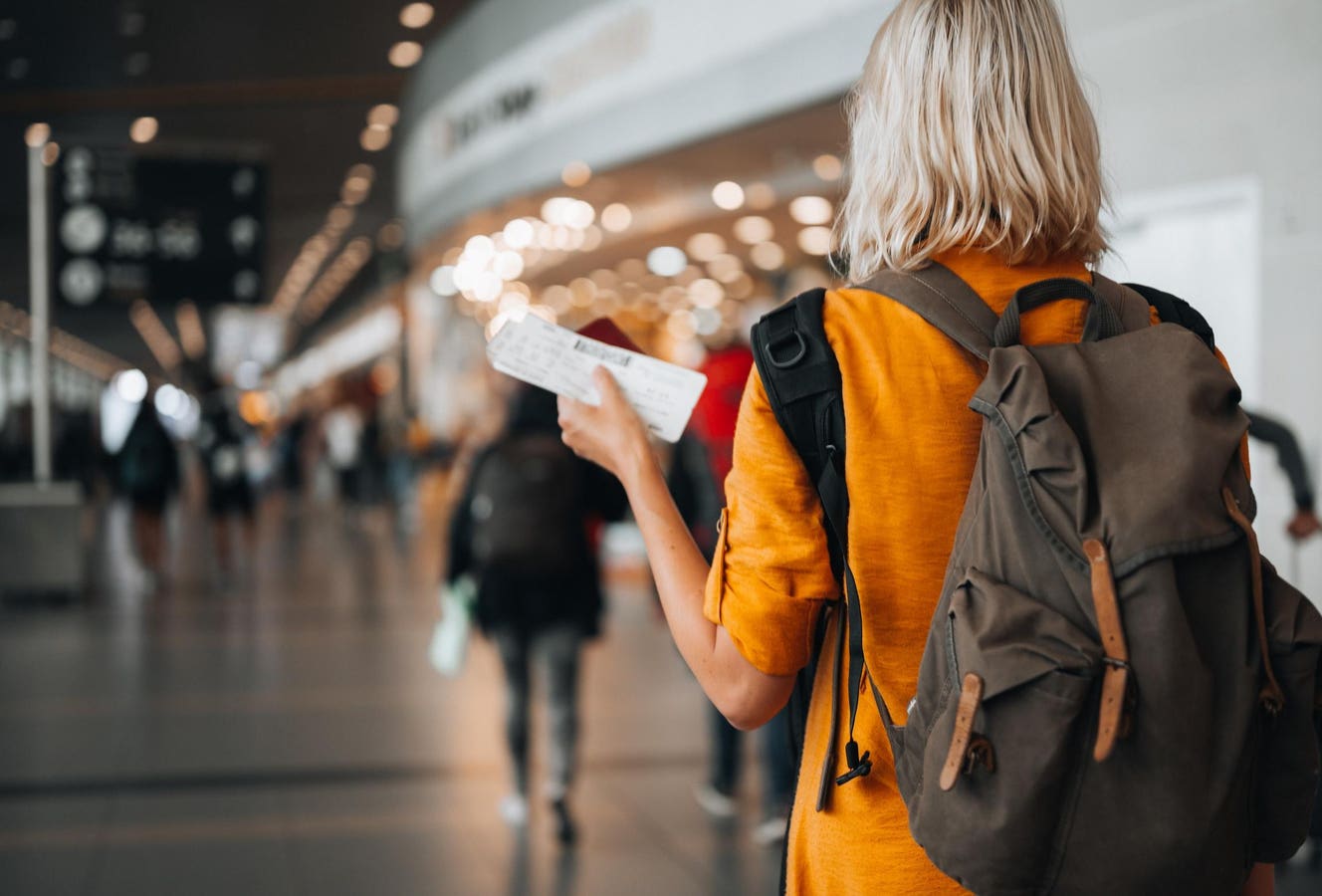In the rapidly evolving world of air travel, artificial intelligence is being applied to provide innovation throughout the entire experience. As we navigate through airports today, most of the seamless operations we take for granted—from security screenings to baggage handling—are powered by technologies which include AI. Yet, we’ve only just touched the surface with how AI can continue to transform air travel and the airport experience.
At the recent 2024 SXSW Conference and Festivals that took place in March 2024, Bernadette Berger, Director of Innovation at Alaska Airlines, presented on The Sky’s the Limit: How AI will Reimagine Airports. She shared how AI-enabled technologies optimizing operations and transforming passenger experience. As AI technologies such as facial recognition, predictive analytics, personalized digital assistants, and real-time navigation are further brought into the entire travel experience, airports will be transformed into fully accessible and immersive hubs for travel, retail and entertainment.
The panel “The Sky’s the Limit: How AI will Reimagine Airports” focused on AI within the airport. The panel had additional experts in the aviation industry including Celley Buchanan (Alaska Airlines), Matt Gilkeson (Transportation Security Administration) and Ian Law (Los Angeles World Airports).
In a followup interview on Cognilytica’s AI Today podcast, Bernadette expanded on her talk, and shares more insights for this article.
Q: How do you see your role in expanding the use of AI in air transport?
Bernadette Berger: “I am the Director of Innovation at Alaska Airlines. I got my professional start actually in aviation. I’m a trained industrial designer, which means that I design physical and digital and spatial things and jumped right into designing aircraft architecture for over a decade. I fell in love with airplanes. I am a huge airplane nerd.
At Alaska, my team and I have built up the innovation practice for the company. We work on bringing together emerging technologies and human needs, either for our own employees or for our guests. We prototype in our innovation lab quickly to develop technology demonstrators, experience demonstrators, proof of concepts, test these experiences out at the airport, and eventually move them into our operations. That way, we can make sure that when we do launch new technology, we do it quickly, but also we do it in a way that’s still a great experience for our employees and for our guests”
Q: How do you see AI transform the passenger experience?
Bernadette Berger: There’s two types of travelers. There’s the folks who skate into the airport at the last minute. They don’t want to check a bag, don’t want to hang out at the airport, and just want to go from one mode of transportation to the next as quickly as possible without stopping. Then there’s the passengers who want to get to the airport hours ahead of time. They want to hang out at the lounge. They want to buy a book and buy some coffee. They need things to be able to do at the airport as well. On the panel, the first thing we talked about was how we are creating a space and offering to help both types of travelers.
People may not know that AI is already very prevalent in the airport. As a passenger, you might not really feel it, because I would say we are in our efficiency era right now. Airports, airlines, and our security agencies are looking for ways to do what they’re doing today, but with greater efficiency using AI. Layering computer vision algorithms on top of all of the security cameras, or using AI to be able to reduce the number of lanes that need to be used or machines that need to be used in security, or even creating tools for our employees to be able to help guests get the customer service that they need faster are all examples of how AI is currently being used in travel. All of these examples are still very much in the efficiency space, and I’m really interested to see as we evolve past just understanding the data we have, where we might go next.”
Q: What are some of the challenges you see with AI adoption within the transportation industry?
Bernadette Berger: Transportation is such a complex ecosystem. I mean, airports are cities in themselves. Every airport is controlled and governed differently. As an airline, we operate at 113 different airports with thousands of employees working across those airports. The differences between those operations is immense.
So, to be able to begin a conversation about how you can develop an AI solution for a complex problem, let’s say, around bags, isn’t always as easy as it sounds. However, it’s a great application for AI because we have so much data around bags, and we can be more proactive and predictive around the way that we move the thousands of checked bags daily.
So what we do to break down this big, gnarly challenge in our innovation practice is we break down those human challenges and technology gaps into the smallest, quickest test that we can prove. And that way, an entire program might include the proving out of eight different components. First we need to collect data. Then we need an approach that can be specific for this need. Then we need to communicate those results in an interaction form for a very, very busy airport employee. And we need to communicate that to our guests. So, we need a solution that’s actually easy to interact with.
In my innovation group we break all those down. We run very fast tests in our innovation lab, where we build things out of cardboard and wood and we mount kit cameras and train and refine our algorithms there. Then we move them into the airport where we can test it in the real airport environment with real passengers and real customer service agents. From all of those small, fast iterations, we learn so much, and we learn quickly. This approach allows us to move on from programs that we otherwise could have sunk an entire team’s efforts over the course of one year only to find out it is not the right way.
Once we have proven those small tests, that’s when we move it into operations. And that’s where you then can say, because we’ve broken down this problem into its eight sub components, those are different modular ways that this AI model can flex in this situation for the way that we are handling bags at this airport. All these steps build together. It can be very daunting for teams to figure out how to apply especially such a broad topic of technology to their challenges. But we see it as human needs, technology gaps, and how can you find those small wins along the way.
Q: How do you see AI impacting passenger and customer experience?
Bernadette Berger: This is really an efficiency game, right? So the things that you might feel as a passenger is just that your checked bags have arrived at their destination. The things you might feel as a passenger are around safety and security. As you move through the airport, as you move through the air, you might feel that your interactions with a gate agent feel really warm and personal and they knew that you needed to have your seats reassigned so that you could sit with my family. They also knew that, hey, you’d love to have a coffee and a cookie or a chocolate bar when you get on the plane.
It might just feel like a good experience, but there’s a lot behind the scenes that are working to make that happen. Biometrics is one of the things that I think is going to become a really big shift for passengers, but also continue to help us be able to navigate your day of travel with more simplicity. If you’re traveling in a group, and you’ve got four different passports, do you ever do the juggle of trying to fumble for the phone to get the boarding pass going trying to manage all the different ways to prove that you are who you are and that you’re supposed to be there and you’re supposed to be on this flight?
We’re excited about moving to a model where you can move through the airport and onto the plane with just your face or with just your phone, whether that’s your mobile digital identity, whether that’s comparing your beautiful face to the image that our government agencies already have of you from your driver’s license or from your passport. Just comparing that photo will make it a lot easier for our guests to be prepared for a day of travel and move through the airport. Guests can experience faster lines, less lines, and less hassle. No one wants to wait in line. The hurry up and wait game is not fun.
But as we think about moving ahead and we think about being proactive and predictive for our guests now, we think about how we can make that big morning rush start to taper out so that there are no lines at the airport. Because I’ve sent you a real time offer saying, hey, I know that it’s 09:00 a.m. and you’re rushing to the plane. Just one tap here if you want to order your favorite coffee drink ahead of time. It’ll be there at the counter near your gate, ready for you. All you have to do is walk by and grab it. Just making these offers and recommendations at the right time in an interaction that isn’t requiring a guest to read and comprehend and make a decision has a big impact. You’re in decision fatigue by the time you’ve gotten to the airport. It just needs to be easy. Everyone wants to feel escorted from home to the plane. And if there’s ways that we can use our algorithms and our recommendations and technology to do that, then we’re going to make travel not only easier for all, but more accessible for more people.
(disclosure: I’m a co-host of AI Today podcast)










